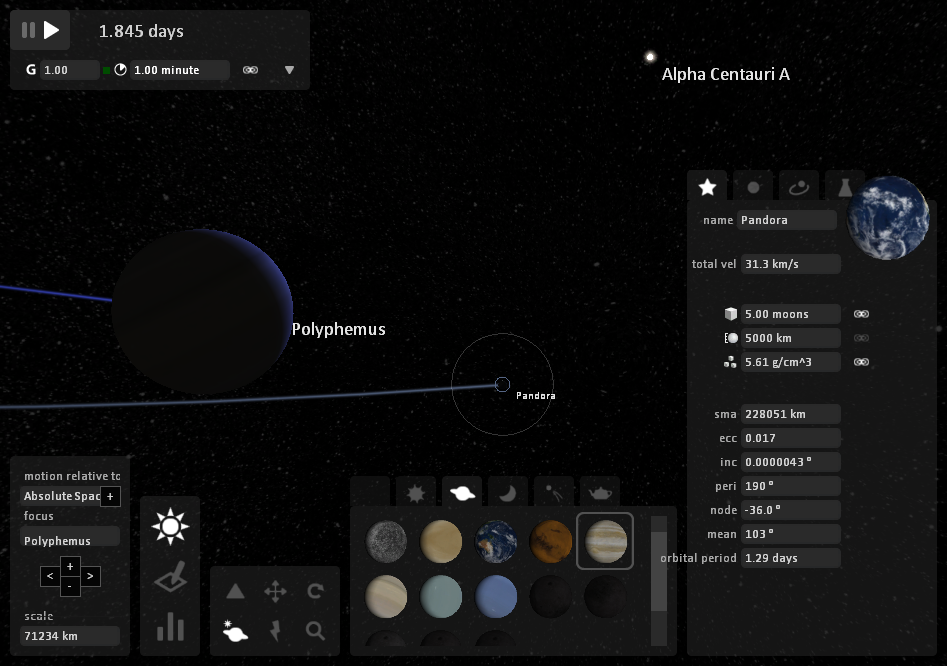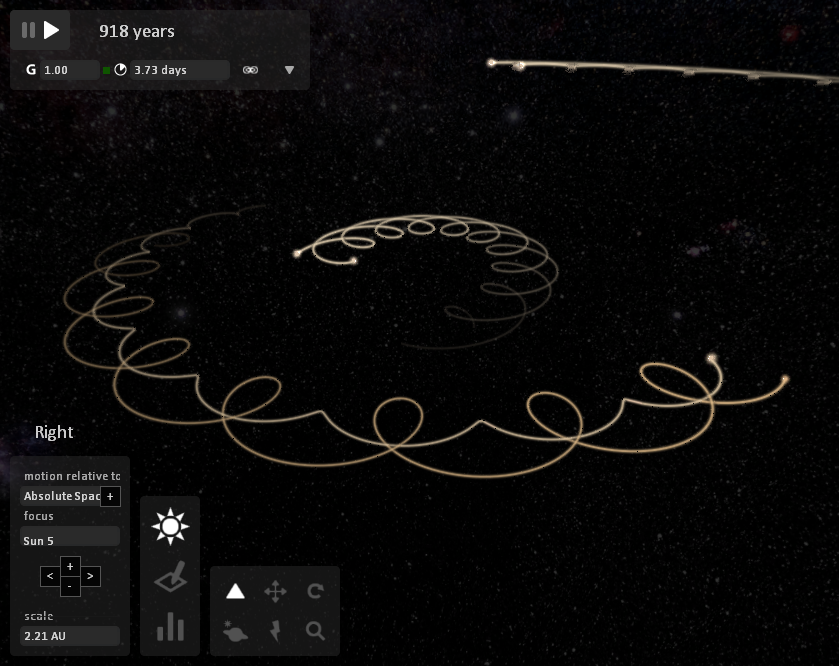Earth’s Day Just Got Shorter
Mar 3rd
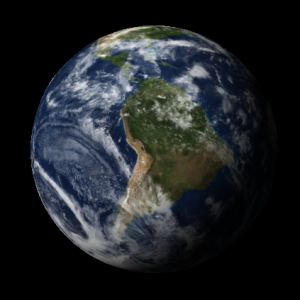 The major Chile earthquake a few days ago appears to have shortened the length of Earth’s day by 1.26 microseconds (1.26 × 10-6 or 0.00000126 seconds) and moved its axis by about 8 cm (3 in).
The major Chile earthquake a few days ago appears to have shortened the length of Earth’s day by 1.26 microseconds (1.26 × 10-6 or 0.00000126 seconds) and moved its axis by about 8 cm (3 in).
How could this happen?
Have you ever spun around in a chair and noticed that moving your arms in or out changed your speed? When you put your arms out you rotate slower and pulling them in makes you spin faster. It would seem that the earthquake caused a notable chunk of Earth’s mass to move closer to the center which caused the spinning Earth to speed up.
Predicting the Future
Mar 1st
 Something made better in Universe Sandbox 2.
Something made better in Universe Sandbox 2.
Universe Sandbox is software that simulates gravity, one of the four fundamental forces in the universe. Simulate a rouge star crashing through our solar system or two massive galaxies colliding. More Info
City on Caterpillar Tracks
Feb 28th
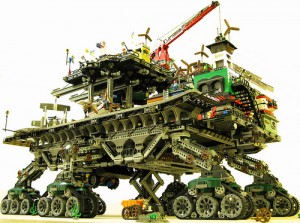 This has nothing to do with astronomy or Universe Sandbox, but as a LEGO fan, I’m incredibly inspired by this creation:
This has nothing to do with astronomy or Universe Sandbox, but as a LEGO fan, I’m incredibly inspired by this creation:
http://www.brothers-brick.com/2010/02/19/crawler-town-brings-the-city-to-you/
Which seems to be directly inspired by fictional Traction Cities from Philip Reeve’s Mortal Engines Quartet series of books:
http://en.wikipedia.org/wiki/Traction_City
I think the idea of massive, movable cities is fascinating to think about.
Source: Brother’s Brick, an excellent LEGO blog.
Sixty Symbols
Feb 18th
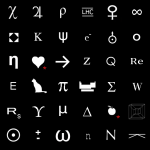 So I’ve run into these videos before, but never realized they were part of a masterful series. The University of Nottingham has created 60+ ~5 minute videos each devoted to a symbol used in physics and astronomy.
So I’ve run into these videos before, but never realized they were part of a masterful series. The University of Nottingham has created 60+ ~5 minute videos each devoted to a symbol used in physics and astronomy.
The Saturn and Jupiter videos were both great.
And a recent video all about Saturn’s most recently discovered (and very faint) ring. This is easily the best description I’ve heard of the ring and how it likely formed:
http://www.youtube.com/watch?v=_XgcPso9VHg
Check them out… they’re short, interesting, well made, and awesome.
Universe Sandbox to exhibit at the WA Science Teacher Conference
Jan 25th
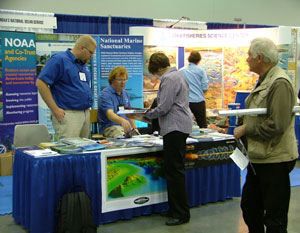 We will be showing off Universe Sandbox 2 at the Washington State Science Teacher Conference on March 12-14, 2010.
We will be showing off Universe Sandbox 2 at the Washington State Science Teacher Conference on March 12-14, 2010.
I’m really excited about this opportunity.
This conference is organized by the WSTA (Washington Science Teacher Association).
The picture is of the AFSC booth at the WSTA 2007 conference.
This will be our first exhibition.
Caught the Reddit Wave
Jan 12th
 I’m a fan of a site called Reddit. It’s basically a social news / social bookmarking site. In one of the many subgroups someone asked about personal projects that people have worked on. I shared my work about Universe Sandbox and within a few hours I was voted the top comment (when sorted by best, the default method, out of hundreds of comments submitted).
I’m a fan of a site called Reddit. It’s basically a social news / social bookmarking site. In one of the many subgroups someone asked about personal projects that people have worked on. I shared my work about Universe Sandbox and within a few hours I was voted the top comment (when sorted by best, the default method, out of hundreds of comments submitted).
http://www.reddit.com/r/AskReddit/comments/aocvm/hey_reddit_what_are_your_personal_projects/
I hope to be able to duplicated this flood once I release Universe Sandbox 2.
It’s going to be so much easier to use and learn.
.
More info…
http://en.wikipedia.org/wiki/Reddit
Universe Sandbox 2 is Coming
Jan 10th
I’m pleased to announce that the next version of Universe Sandbox will be released in early 2010.
There’s so many new features and improvements to share; I’m so excited. My primary goal with the new version is to make it easier to use and learn while exposing many of the buried features (like chart mode) in the original version.
As we approach the launch date I’ll be posting here about the new features and improvements. Be sure to subscribe.
Here’s two work-in-progress screenshots from the new version. There’s still more to do and some of this will change before it’s released.
You can read more about the next version in the forums:
http://universesandbox.com/forum/index.php/topic,635.0.html
Newton’s Birthday
Jan 4th
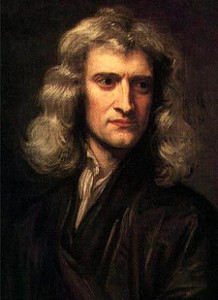 Today’s Issac Newton’s birthday, the man who discovered the simple equations that predict the forces of gravity.
Today’s Issac Newton’s birthday, the man who discovered the simple equations that predict the forces of gravity.
This simple equation is at the heart of Universe Sandbox. It’s what makes it all work.
And while his beautiful equation doesn’t work when you get really small or really big, it’s “adequate over an enormous range of masses of objects from about 10−23 to 1030 kg.” source
It’s amazing how something so simple can explain so much.
Happy Birthday Issac.
.
For comparison: Earth’s mass about 6 × 1024 and the Sun’s mass is about 2 ×1030 .
More about Newton
http://en.wikipedia.org/wiki/Isaac_Newton
More about Gravity
http://en.wikipedia.org/wiki/Newton’s_law_of_universal_gravitation
.

